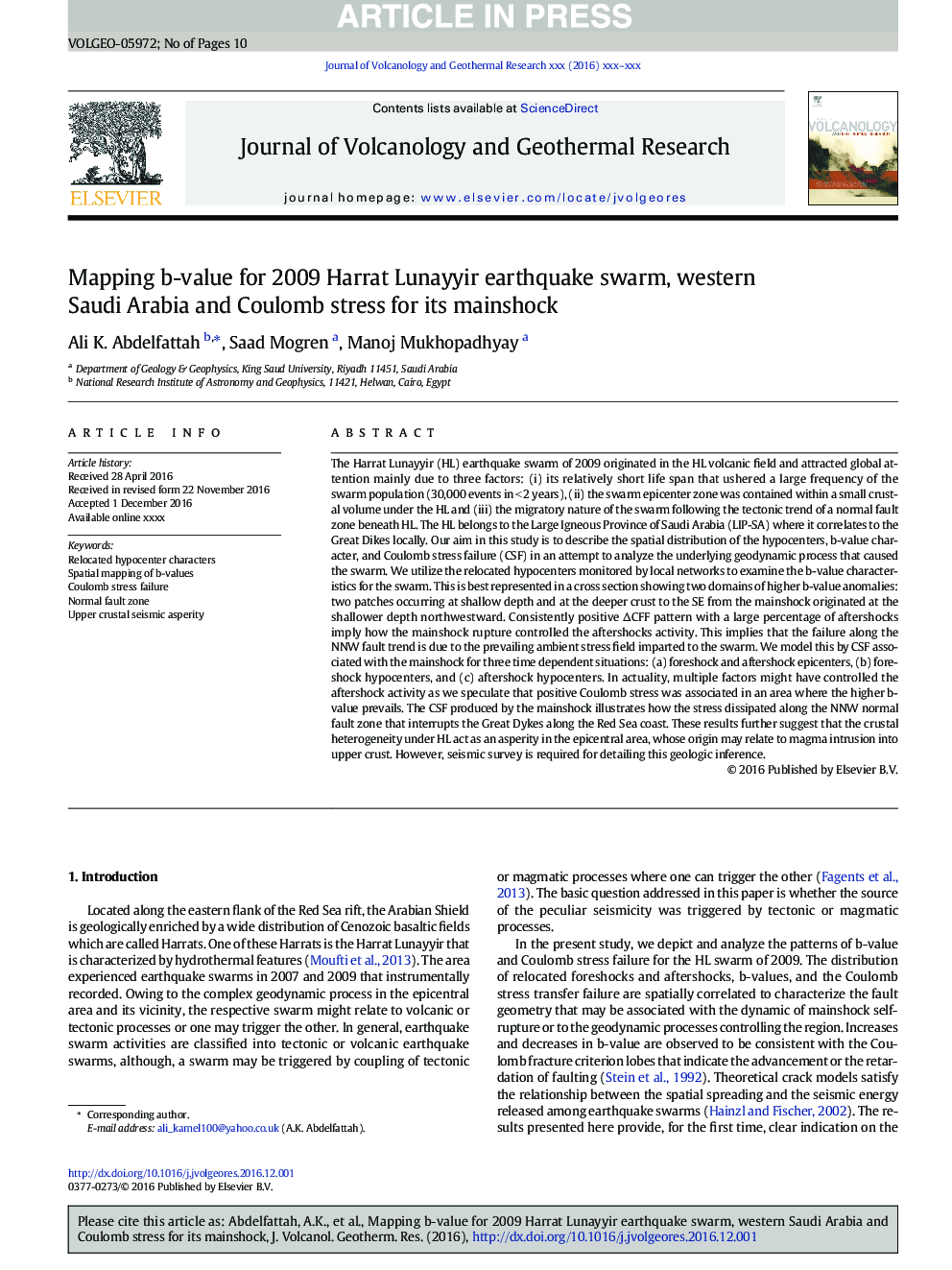| کد مقاله | کد نشریه | سال انتشار | مقاله انگلیسی | نسخه تمام متن |
|---|---|---|---|---|
| 5783706 | 1638292 | 2017 | 10 صفحه PDF | دانلود رایگان |
عنوان انگلیسی مقاله ISI
Mapping b-value for 2009 Harrat Lunayyir earthquake swarm, western Saudi Arabia and Coulomb stress for its mainshock
دانلود مقاله + سفارش ترجمه
دانلود مقاله ISI انگلیسی
رایگان برای ایرانیان
موضوعات مرتبط
مهندسی و علوم پایه
علوم زمین و سیارات
ژئوشیمی و پترولوژی
پیش نمایش صفحه اول مقاله

چکیده انگلیسی
The Harrat Lunayyir (HL) earthquake swarm of 2009 originated in the HL volcanic field and attracted global attention mainly due to three factors: (i) its relatively short life span that ushered a large frequency of the swarm population (30,000 events in <Â 2Â years), (ii) the swarm epicenter zone was contained within a small crustal volume under the HL and (iii) the migratory nature of the swarm following the tectonic trend of a normal fault zone beneath HL. The HL belongs to the Large Igneous Province of Saudi Arabia (LIP-SA) where it correlates to the Great Dikes locally. Our aim in this study is to describe the spatial distribution of the hypocenters, b-value character, and Coulomb stress failure (CSF) in an attempt to analyze the underlying geodynamic process that caused the swarm. We utilize the relocated hypocenters monitored by local networks to examine the b-value characteristics for the swarm. This is best represented in a cross section showing two domains of higher b-value anomalies: two patches occurring at shallow depth and at the deeper crust to the SE from the mainshock originated at the shallower depth northwestward. Consistently positive ÎCFF pattern with a large percentage of aftershocks imply how the mainshock rupture controlled the aftershocks activity. This implies that the failure along the NNW fault trend is due to the prevailing ambient stress field imparted to the swarm. We model this by CSF associated with the mainshock for three time dependent situations: (a) foreshock and aftershock epicenters, (b) foreshock hypocenters, and (c) aftershock hypocenters. In actuality, multiple factors might have controlled the aftershock activity as we speculate that positive Coulomb stress was associated in an area where the higher b-value prevails. The CSF produced by the mainshock illustrates how the stress dissipated along the NNW normal fault zone that interrupts the Great Dykes along the Red Sea coast. These results further suggest that the crustal heterogeneity under HL act as an asperity in the epicentral area, whose origin may relate to magma intrusion into upper crust. However, seismic survey is required for detailing this geologic inference.
ناشر
Database: Elsevier - ScienceDirect (ساینس دایرکت)
Journal: Journal of Volcanology and Geothermal Research - Volume 330, 15 January 2017, Pages 14-23
Journal: Journal of Volcanology and Geothermal Research - Volume 330, 15 January 2017, Pages 14-23
نویسندگان
Ali K. Abdelfattah, Saad Mogren, Manoj Mukhopadhyay,